Monocular vs Spotting Scope: Which Should You Choose?
Last Updated on
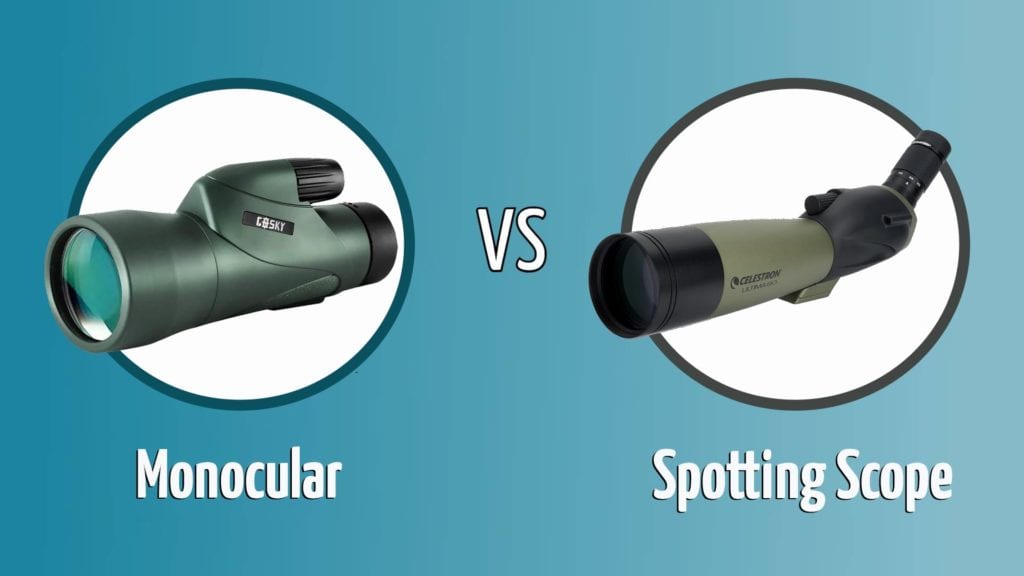
Anybody who’s into bird watching, hunting, astronomy or any activity that involves the use of optics will tell you that there’s nothing worse than missing an opportunity to invest in a great spotting scope or monocular.
And if we’re being completely honest here, we know it’s quite unfair pitting these two against each other, but sometimes that’s exactly what you need to do so as to figure out which device is more important for a particular function.
That being said, we’ll start by looking at an overview of each optical aid, maybe talk a little bit about their uses, benefits and drawbacks, and then finish this off by listing some of the key features to take into consideration before investing your hard-earned money into a monocular or spotting scope.
Monocular Overview
What’s a monocular? Well, if we were to go with the layman’s definition, split a pair of binoculars into two equal halves, making sure there is a lens on each side. But we’re going to settle for the scientific definition, which says they’re essentially refracting telescopes, modified to magnify the images of faraway subjects by allowing light to pass through prisms and lenses. So many people find them appealing because they’re portable and applicable in many situations.
Types of Monocular
Compact Monocular
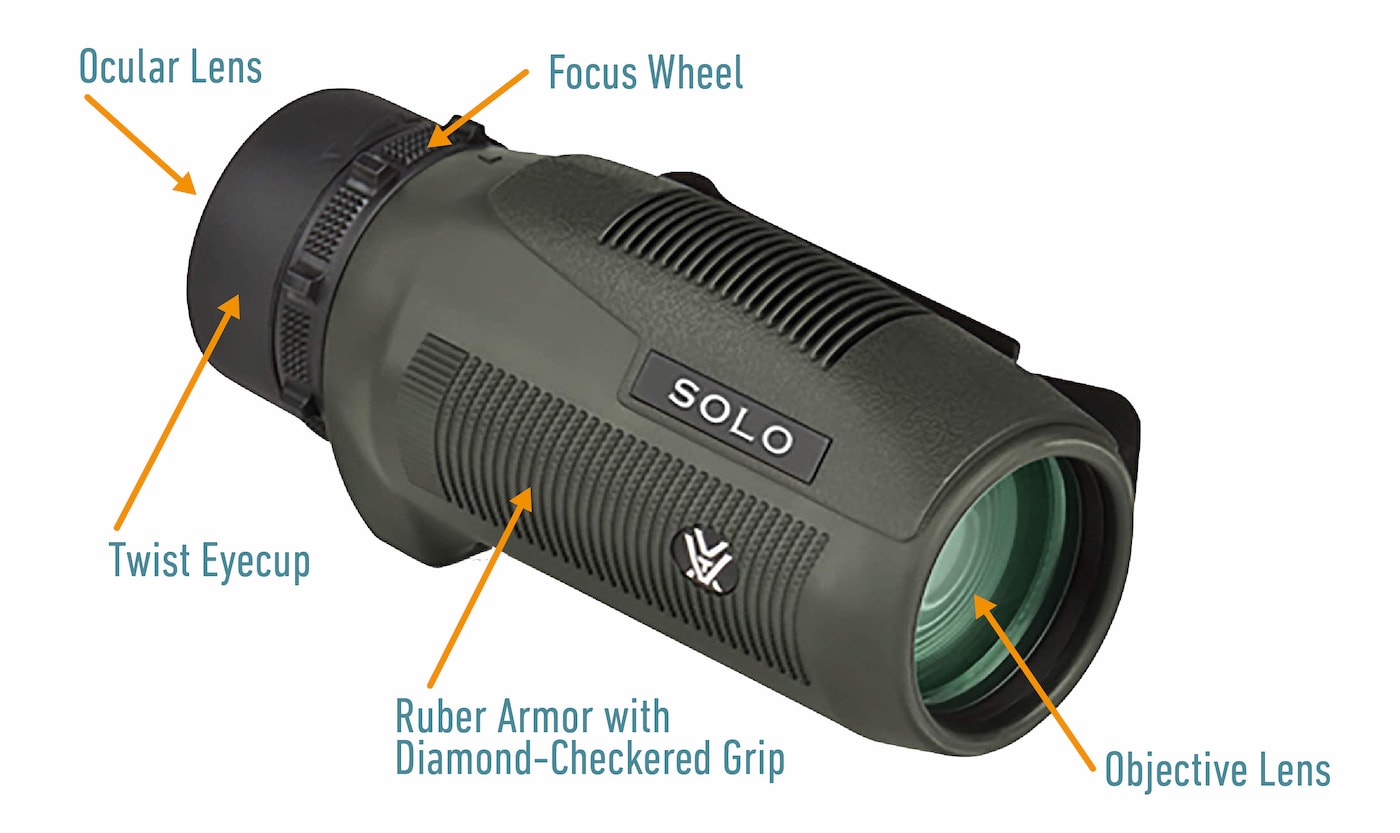
Monoculars are small in size—There’s really no argument to be had there. However, the one thing that most people aren’t aware of is the fact that we actually do have a particular type that’s smaller than the average size.
Compact monoculars are smaller by a couple of inches, and can easily fit into anything. Including your purse or jacket pockets.
But there’s a caveat. Unlike other models, this model comes with a lower magnification, and that’s not something that many users are willing to compromise. Its lens’ diameter is also smaller, and only suitable for simple viewing.
Thermal Imaging Monocular
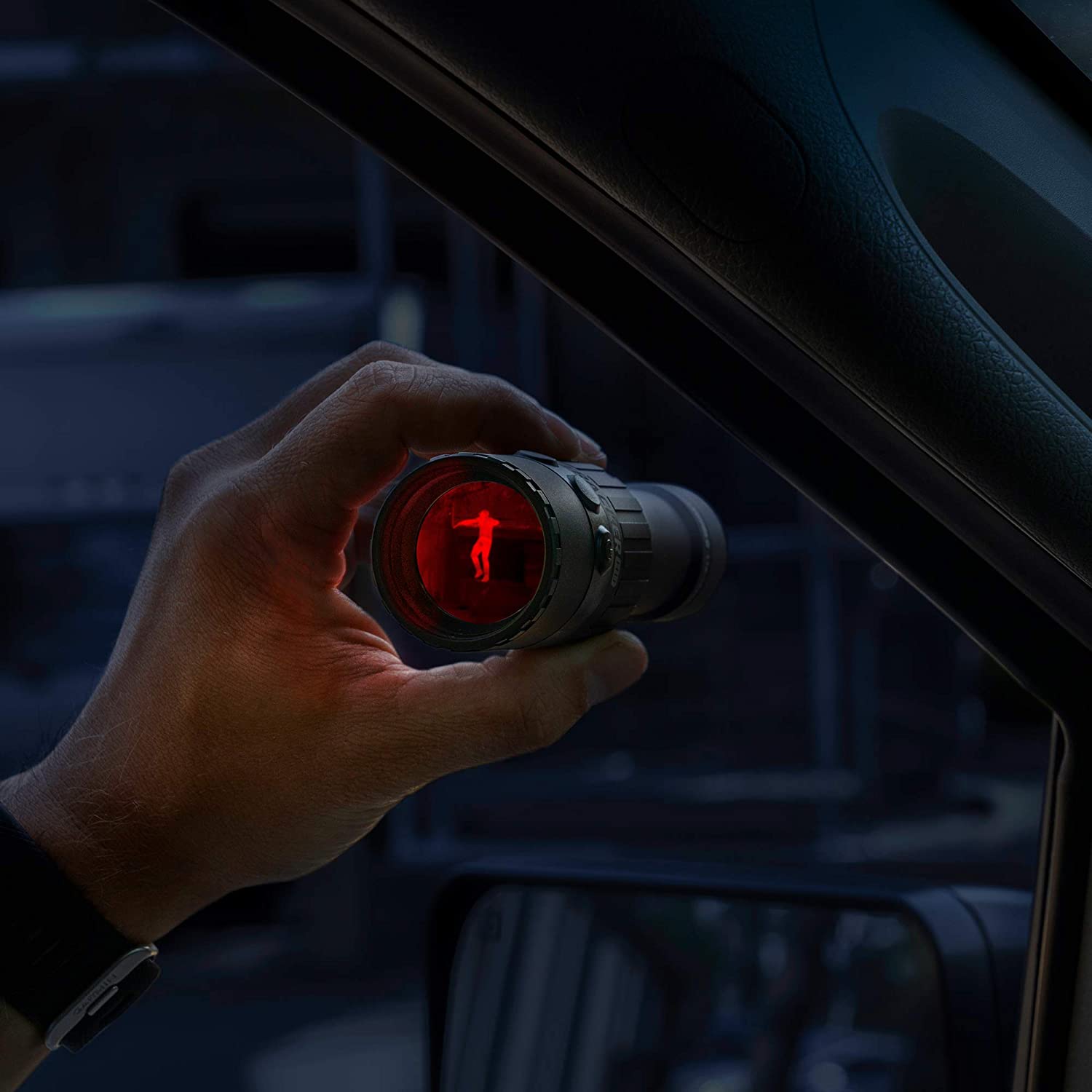
This type shares so many similarities with the night vision monocular, but it’s different. And yes, this is the first time we’re mentioning the night vision monocular. To avoid confusion, we’ve decided to list it as the last item.
Anyways, like every other monocular, the thermal imaging monocular is mostly applicable under the blanket of darkness. You’ll most likely find it in the backpack of a research scientist, hunter, or anyone searching for animals that are good at camouflaging at night.
Speaking of animals, we all learned how warm-blooded animals often generate heat so as to maintain a constant body temperature. That heat is what’s picked up by the thermal imaging monocular, and converted into images.
Infrared Monocular

This is yet another replica of the night vision monocular. The way it illuminates objects in the dark is what defines it, as it utilizes different wavelengths instead of using light. Infrared monoculars are very affordable, and user-friendly. Just make sure the one that you go for doesn’t have a visible red light if you want to enjoy your adventures.
Night Vision Monocular

The night vision monocular features not one, but two technologies. We have the thermal imaging option and the infrared. And we bet now you can see why we felt it was important to first talk about the thermal imaging and infrared monoculars before getting to this one.
You’ll also be happy to learn that you’ll be getting value for money if you invest in this device, seeing as it’s still useful during daytime. All you have to do is switch off the thermal imaging and infrared mode, and viola!
Specifications of a Monocular
The measurements that you take into consideration while buying spotting scopes, telescopes, or binoculars, are the same measurements that you ought to consider here. Let’s assume for a quick second that you’re only interested in their magnification and objective lenses. The manufacturer might give you this specification: 8×42.
What that basically means is, you’ll be working with a monocular that magnifies an object 8 times, with an objective lens that’s 42 mm in size. And these specifications can change. If you prefer a higher magnification, you’ll definitely be able to see further but the angle of view will be narrower.
How bright your image looks will be determined by the size of your monocular’s objective lens. Wider lenses are good at creating brighter images, and that’s why they’re common among users who usually find themselves in low-lighting situations.
- It’s lightweight and very compact
- Affordable compared to spotting scopes or binoculars
- Have a higher magnification
- Appropriate for users who are visually impaired in one eye.
- Can be used as a magnifying glass
- Has a smaller aperture in comparison to spotting scopes
- Lacks that wide angle viewing
- Not very useful when tracking moving objects
Spotting Scope Overview

Thanks to advancements in technology, we’ve been able to improve a lot of things in this field. Including lenses used in the catadioptric optical systems, and reflecting telescopes. The creation of the spotting scope has always been attributed to the application of the prism-erecting systems, meant to rectify image orientation.
Type of Spotting Scopes
A spotting scope will either be straight or angled. And this is something that you’ll quickly realize when you go out shopping for one. Also, each one of them has its own merits and demerits.
Straight Spotting Scopes

Remember, it’s all in the physical attributes. A straight spotting scope will have an eyepiece aligned with its lens, and hence, look like a long tube. It’s common among users still trying to learn the in and outs of such a device, and makes object-focusing seem so easy.
The only disadvantage here is the discomfort or neck pains that you’ll eventually have to deal with, if you’re planning to observe your object for an extended period.
Angled Spotting Scopes
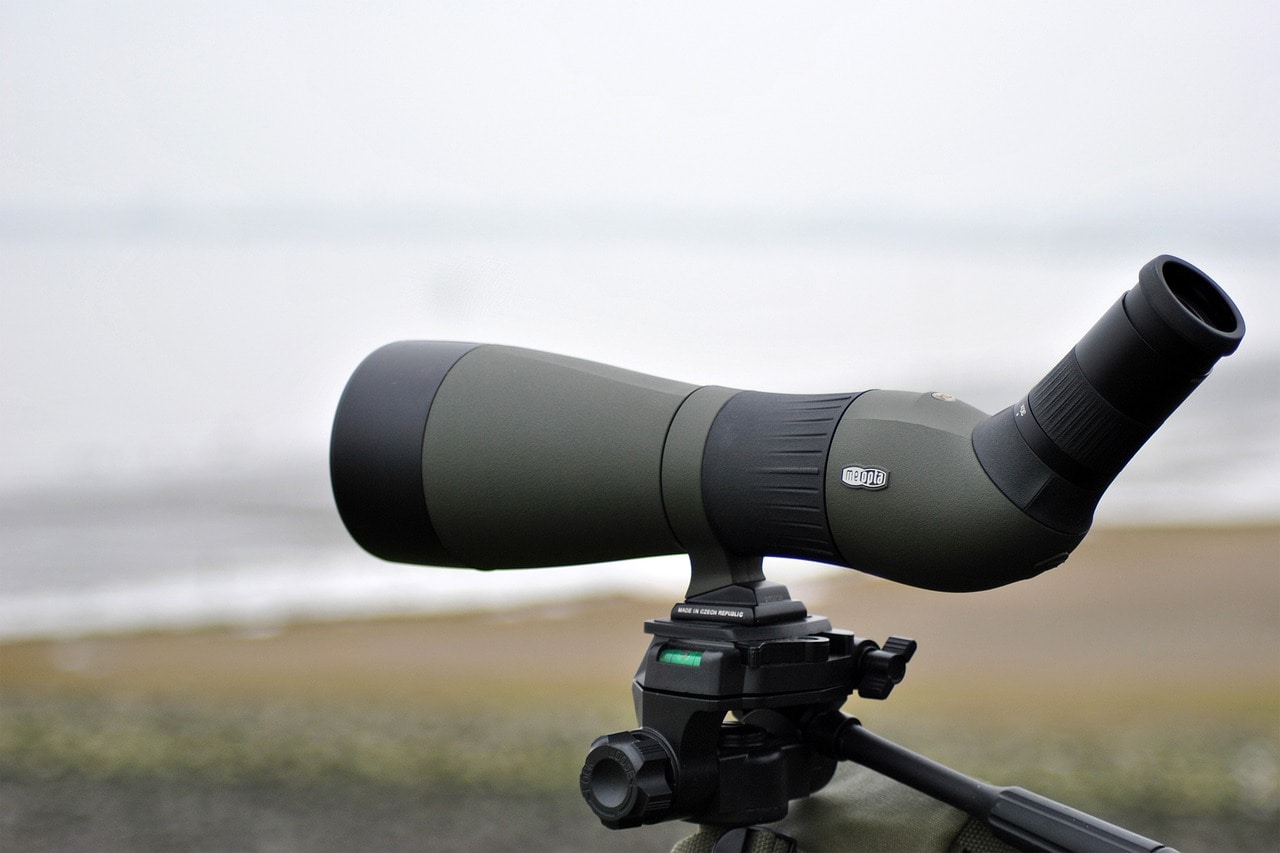
You’ll definitely be able to tell you’re holding an angled spotting scope if you see one. Its eyepiece is always set at a 45-to-90-degree angle from its lens, and it somehow looks way cooler than the other one. We would also like to add that they’re very user-friendly seeing as users can adjust their viewing positions whenever they want.
Any drawbacks? Yes, there’s one. You’ll have to wipe and store them in a cool dry place or they’ll quickly collect moisture from the atmosphere. And knowing how delicate these aids are, believe us when we say you don’t want that.
- You might also be interested in:Best Night Vision Scopes – Reviews & Top Picks
Specifications of a Spotting Scope
Like the previous section, this section right here is meant to help you understand what the numbers on the scope mean. So, a good example of a pattern that you might see inscribed on the scope is—20-60×80.
Now, the 20 and the 60 are the scope’s from-to magnification. Some people like to refer to it as the power, but again, we like to keep things simple. It’s simply the number of times an object under observation is closer to you, as opposed to how it would look had you used your naked eye to view it. If we work with that logic, 20X will be 20 times closer or 20 power.
The 80 indicates the lens’ diameter, usually measured in millimeters. In our case, we have a magnification that’s 20 to 60 times, and a lens’ diameter that’s 80mm.
- It’s applicable in low light situations
- Has a higher zooming power
- Ideal for long-range shooting
- Can be used free-hand
- They are costly
- Requires accessories like the tripod
- Not always waterproof
Factors to Consider
Purpose
What are you buying the monocular or spotting scope for? Are you planning to use it during hunting, long-range shooting, a photo shoot session? Or do you feel like you need an optical aid just in case you find yourself in a position where you’ll have to use one? It’s upon you to first figure out why you need an optical gadget before making any purchase. Impulse-buying will only come back to bite you, and you’ll have no one to blame.
Glass quality
Glass quality is key when it comes to these optical aids. It’s the one factor that determines the image quality that will be delivered to the user’s eyes. Make the mistake of opting for a cheaper, low-quality glass and you’ll feel cheated. The images will appear dull because your glass keeps on blocking some of the light trying to pass through.
A good spotting scope or monocular will have coated lenses. The coating is meant to improve light transmission, and therefore, giving you a brighter image.
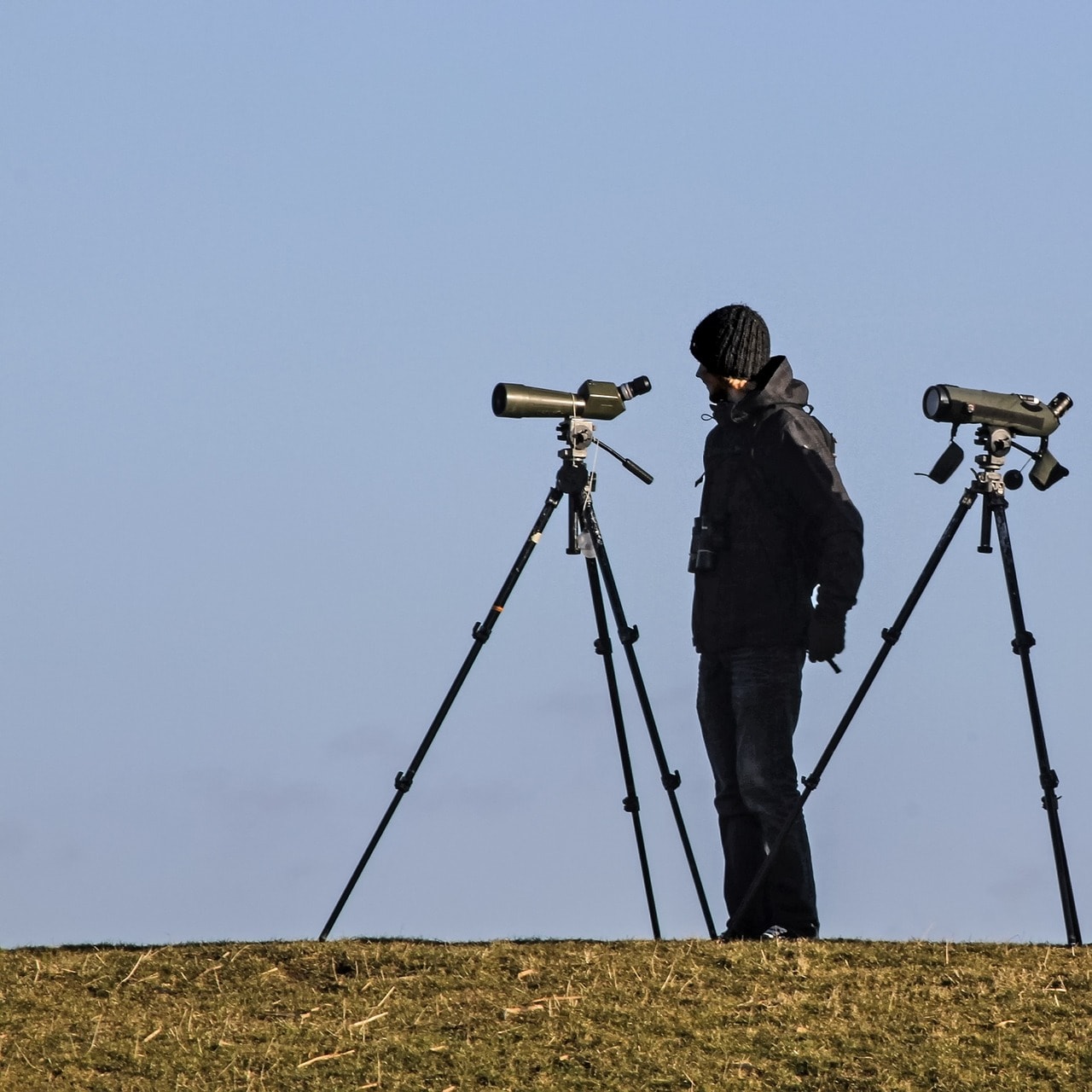
Magnification and Eyepieces
The magnification or power of your monocular or spotting scope will obviously vary. And it’s often determined by the gadget’s eyepiece, which comes in dissimilar designs. It could be fixed/zoom, or removable/non-removable.
Removable eyepieces are eyepieces that allow users to make changes should they feel the need to maximize efficiency. In addition, they come with a fixed or zoom magnification option.
Let’s throw in a hypothetical.
Say you get yourself a spotting scope that has removable zoom eyepieces. You’ll have enough room to make adjustments within that set range. For example, if it has a magnification that’s 20-60X, that means you can work with any magnification that’s between 20X and 60X. And here’s the kicker; those adjustments can be done by hand. No machine or special skills required.
Field of View
In the optical business, you’ll hear about this factor a lot. It’s abbreviated as FOV, and it refers to the observable area that you can see with the help of the gadget. Whether you’re bird watching, taking photos, camping, or just hiking for fun, you’ll for sure want a reliable piece of equipment that has a great view.
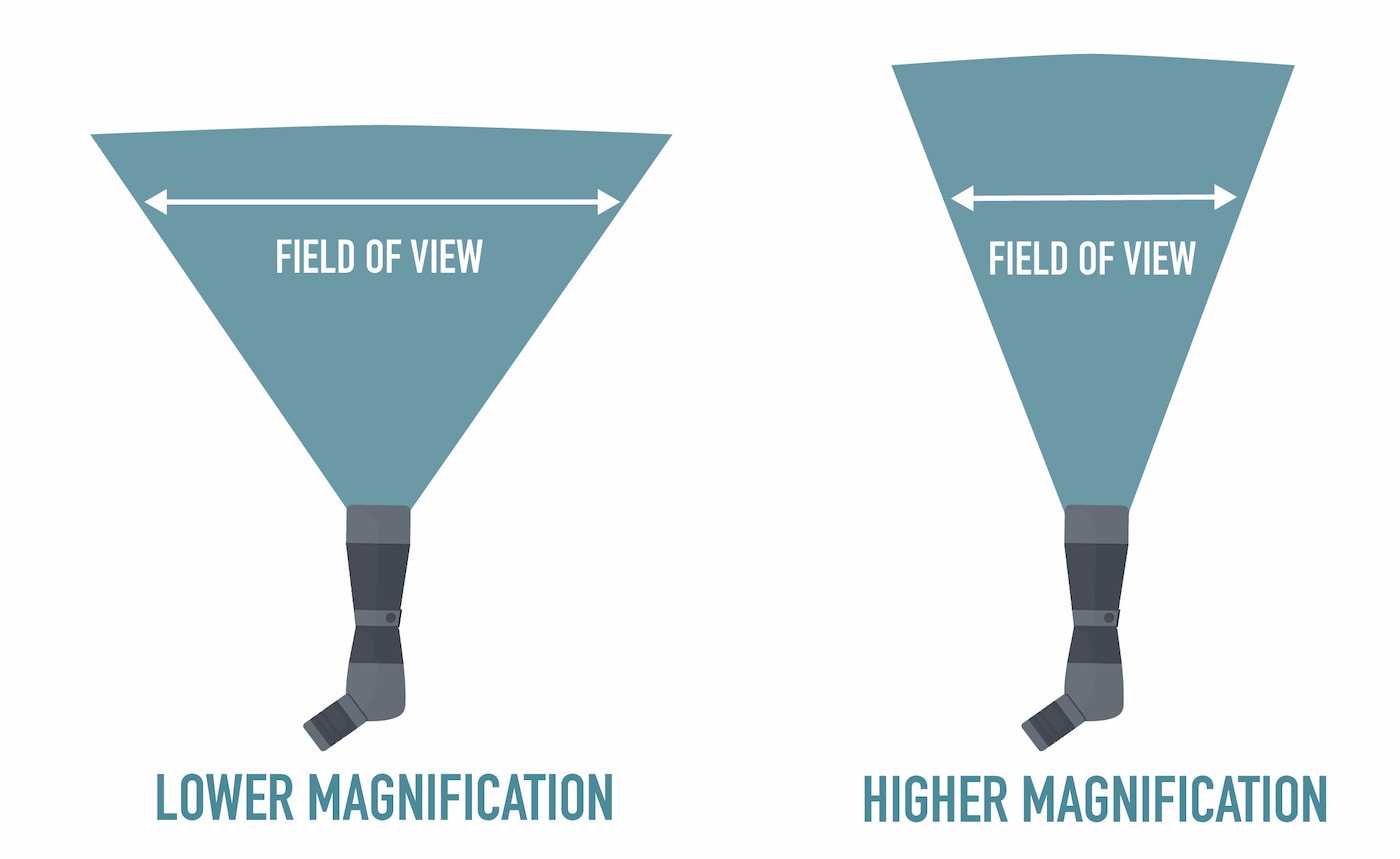
Why Choose a Monocular?
From time to time, we’ve heard guys ask, “Why work with an equipment that only has a single lens when you have an option of choosing one that has two or more?” And here’s why:
- Not everyone has eyes that are as sharp as a hawk. Some people are partially blind in one eye.
- Compared to spotting scopes or binoculars, monoculars are portable, light, and more compact.
- They come in different sizes.
- Monoculars are user-friendly, and the best option for those who only want to take a quick peek at something.
Why Choose a Spotting Scope?
This gadget is applicable in practically every setting. It all depends on the specifications that you have. For instance, if you have a decent magnification, you could consider using it during:
- Photography: Attach a DSLR camera to your scope’s T-mount adapter, and you have everything you need to take quality photos.
- Birding: You don’t really need an expensive spotting scope or higher magnification for this. Just invest in something reasonable and you’re good to go.
- Hunting: For the record, an angled spotting scope is not the gadget for this activity. You want something waterproof, and not something that will be affected by moisture if your attention shifts to something else. But yes, a spotting scope is a useful tool during hunting.
In Conclusion
By now, you should be having an idea of whether a monocular or spotting scope will serve you best. Don’t buy something just because you’ve been told that’s what other people are using. They might use that particular aid for sure, but you still won’t know what they’re using it for. Do your due diligence, and you’ll know whether a monocular or spotting scope suits you.
See also:
About the Author Robert Sparks
Robert’s obsession with all things optical started early in life, when his optician father would bring home prototypes for Robert to play with. Nowadays, Robert is dedicated to helping others find the right optics for their needs. His hobbies include astronomy, astrophysics, and model building. Originally from Newark, NJ, he resides in Santa Fe, New Mexico, where the nighttime skies are filled with glittering stars.
Related Articles:
Monocular vs Telescope: Differences Explained (With Pictures)
How to Clean a Refractor Telescope: Step-by-Step Guide
How to Clean a Telescope Eyepiece: Step-by-Step Guide
How to Clean a Rifle Scope: 8 Expert Tips
What Is a Monocular Used For? 8 Common Functions
How to Clean a Telescope Mirror: 8 Expert Tips
Brightfield vs Phase Contrast Microscopy: The Differences Explained
SkyCamHD Drone Review: Pros, Cons, FAQ, & Verdict
